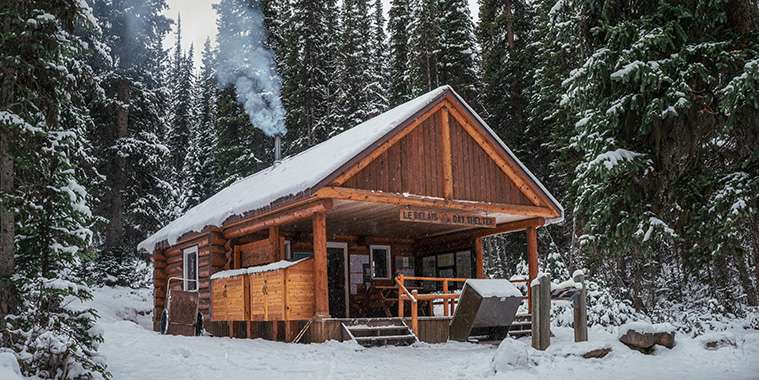By Peter Squire
Another year comes to an end, which means it’s time to make predictions for 2020.
WinnipegREALTORS® is not immune to this behavior as we prepare for our Annual Forecast Breakfast to be held on January 29 at the Victoria Inn. Helping provide more insight than just your local MLS® analyst will be BMO’s Chief Economist and Managing Director, Douglas Porter, and the Honourable Scott Fielding, Minister of Finance for the Province, along with a well-informed commercial panel who will discuss necessary building blocks for developing the Winnipeg METRO Region. In keeping with the breakfast’s 2020 Vision theme, topics will concentrate on where the region will be in 20 years.
The Commercial Panel will be moderated by commercial REALTOR® Marco Silvestri, with the panelists consisting of commercial REALTOR® Reno Augellone, Manitoba Heavy Construction Association President Chris Lorenc, Bird Construction Design Manager Rick Marshall, and the RM of Headingley’s Deputy Mayor Jim Robson.
There’s nothing like settling in on a cold Manitoba winter morning to ponder what may lie in front of us while reflecting on what transpired before!
So how did 2019 fare in terms of Winnipeg-REALTORS® MLS® market? The year-end market release will provide the exact numbers and comparisons to previous years, however, this column affords the chance to speak in more generalities about the factors behind the numbers, and our local market
versus what is happening across the country.
One major development this year is the increase in membership to capture rural areas such as Winkler and Morden where previous MLS® listing and sales activity was very limited. If you only look at MLS® area R35 (South Central Plains) and hone in on its combined single family and condominium listings and sales — which make up the majority of market activity in any MLS® area — there were 517 and 312 respectively for the period of January 1 to November 30. Comparing this same period of time to 2018, there are only 15 listings and 5 sales. There were no condominium listings or sales in R35 in 2018, while this year there have been 80 listings and 54 sales.
The REALTOR® sales force has grown 8%, largely as a result of further expansion into rural areas of Manitoba this year. As of the beginning of December, WinnipegREALTORS® has 1,941 REALTORS® whereas it had 1,797 at this same time last year. The overall WinnipegREALTORS® membership, which in addition to REALTORS® includes affiliate and business partner members, is just below 2,100.
In terms of market share split between Winnipeg and outlying rural municipalities, single family home sales have been trending 70/30 with some months at 69/31. With more sales activity in rural Manitoba this year, one of the effects — besides more listings and sales in 2019 — will be an overall lower market region average single family sales price since rural house prices are lower than the average Winnipeg house price. Using the first 11 months of 2019, and comparing it to the same period in 2018, the average Winnipeg house price is up nearly 2% from $326,816 to $332,644. Sales are up less than 1%.
Rural single family home sales in areas such as Winkler and Morden have increased 16% from 2,334 to 2,709 sales. The rural average single family home sales price decreased in 2019 to $304,747 from $308,895 in 2018. Given that the South Central Plains MLS® area (which includes Winkler and Morden) had 258 sales at an average price of close to $271,000, it stands to reason these newfound sales — averaging a lower sales price than the overall rural average sales price — are going to lower the average sales price this year.
In looking at the entire WinnipegREALTORS® market region, you can see how increased rural sales this year have lowered the average single family home sales price in relation to Winnipeg’s. Last year, the year-to-date average sale price at the end of November was $322,121, so a little less than $5,000 lower than Winnipeg’s. This year, the market region average sale price of $324,543 is more than $8,000 below Winnipeg’s. Nevertheless, the market region average single family sale price this year is still higher than last year’s for the 11-month period we are comparing.
What about condominiums? There is a marked difference compared to single family homes because rural sales represent nearly half their market share of total sales activity. As of the first 11 months, condo sales represent 15.7% of total condominium sales. As a result, the overall market region average sale price for condominiums is very close to Winnipeg’s average sale price. Winnipeg’s is $240,641 while the entire market region is $238,560. The rural average sale price is at $227,420. It has dropped from $235,187 in 2018. The impact of the additional 54 condo sales from South Central Plains is noticeable since they make up 21% of total rural condo sales and have a lower average sale price of $205,000. There were no condo sales in this MLS® area in 2018. For comparison purposes, the overall market region average condominium sales price in 2018 was $238,933 while Winnipeg’s was $239,441.
Any way you look at it, WinnipegREALTORS® market region has some of the most affordable property prices in the country whether or not you break the numbers down to understand what is happening this year.
The healthy listing supply has made the local market very competitive and therefore kept a lid on price increases, as is evident from the numbers provided above. There really are wide divergences in housing markets across the country so it is important to pay attention to what is happening where you live.
The Canadian Real Estate Association (CREA) released its November market report this week, quoting Jason Stephen, president of CREA, who stated: “Sales continue to improve in some regions and not so much in others.”
WinnipegREALTORS® has seen a modest gain in sales this year, although many of the additional sales came from expanding the market region. Next year will be an easier year to compare when looking back on 2019, as WinnipegREALTORS® will not experience the same changes it did this year.
And speaking of CREA, WinnipegREALTORS® will be joining many other real estate boards across the country next year to participate in what is called the MLS® Home Price Index (HPI). Simply put, CREA’s HPI is a more accurate way of gauging house price trends and levels by using over 10 years of MLS® data to define and follow the typical home based on features that have been bought and sold. Stay tuned for more on this important development in the new year.
To purchase tickets to WinnipegREALTORS® Annual Forecast Breakfast: 2020 Vision, visit www.winnipegrealtors.ca
Peter Squire is WinnipegREALTORS® Vice-President, External Relations & Market Intelligence.



